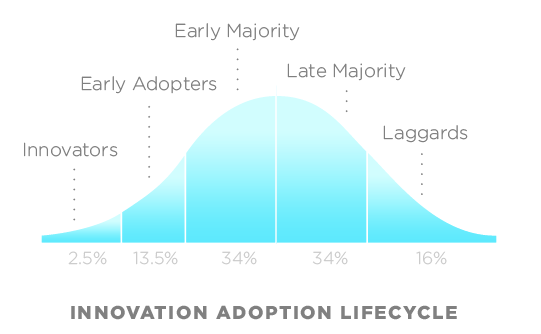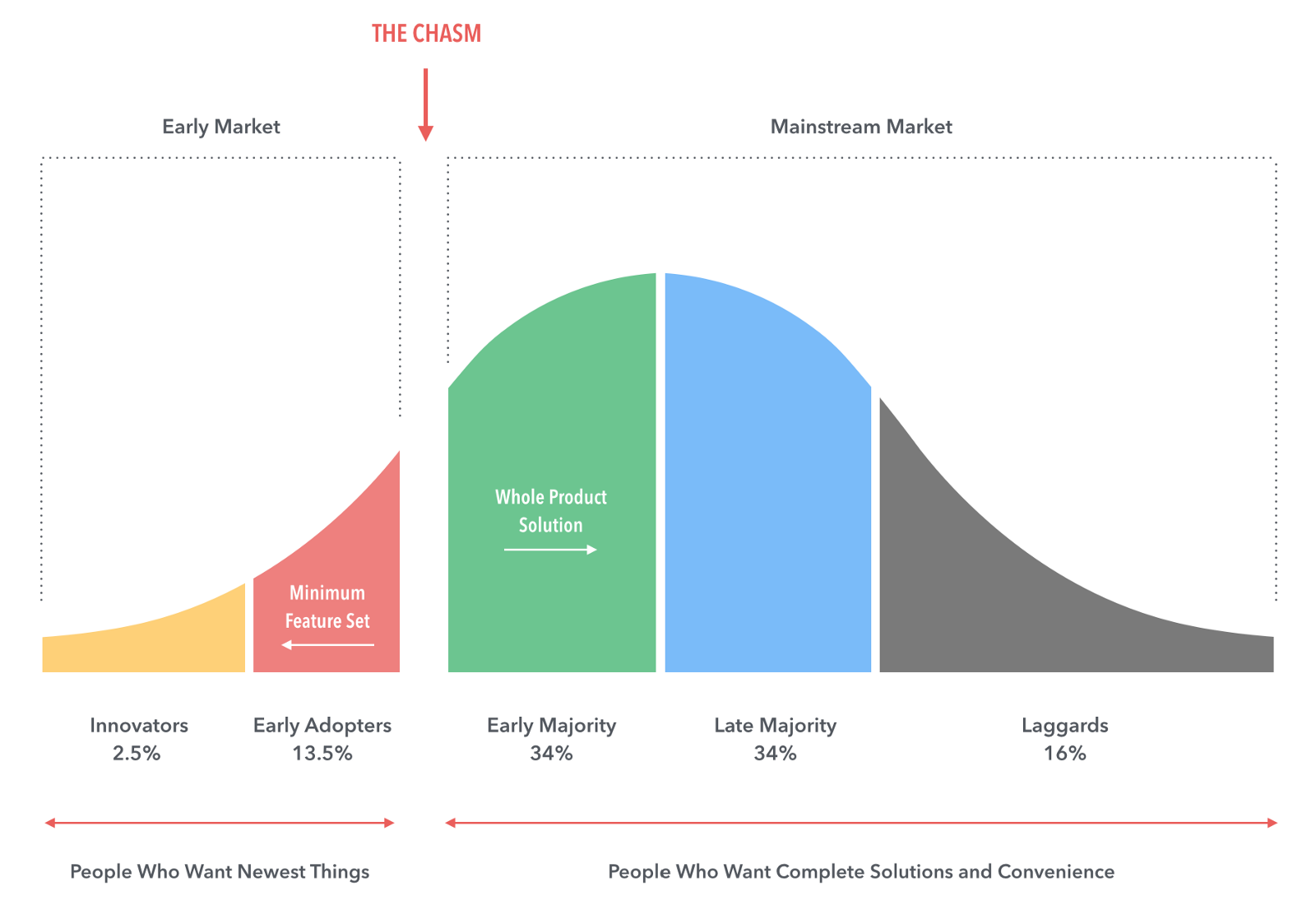What is the chasm in the technology adoption lifecycle?
Is the innovation disruptive?
Dsruptive innovation vs. Continuous innovation
- Whether it ==changes our current mode of behavior== or to ==modify other products and services we rely on==.
- Between continuous and discontinuous lies a spectrum of demands for behavioral change.
High-tech industries introduce disruptive innovation routinely, during which people are converted into customers by following a pattern of normal distribution. The product's user growth follows an S-curve.
When will people buy a high-tech product?

Disruptive innovation's customers are converted at different stages in ==the technology adoption life cycle==. They are...
- Innovators
- Early adopters
- Early majority (pragmatists)
- Late majority (conservatives)
- Laggards
| Segment | What They Want |
|---|---|
| Innovators | novel, cool and experimental things |
| Early Adopters | gaining advantages or getting products before others |
| Early Majority | proven ROI, instant access, low transition costs, support available |
| Late Majority | adopting as minimal as possible or only when everyone else has adopted |
| Laggards | avoidance to adopt new things |
What is the high tech marketing model?
This cycle provides guidance of the ==high tech marketing model: the way to develop a high-tech market is to work the curve left to right, focusing on each group one by one,== because groups on the left promote products for the right ones in a momentum.
Momentum is vital because it can
- save costs
- make it fast so you won’t miss the window of opportunity before next disruption or competitor
Where is the CHASM?
Inspecting into the technology adoption lifecycle, we can see

-
two cracks
- Beneficial usage crack between innovators and early adopters. E.g., Esperanto, VRML, second life, 3D printing. To cross this, we need a flagship application.
- Competent majority crack, between early and late majorities. E.g., home automation.scanning and project management software. To cross this, we need to make it easier to adopt.
-
and one CHASM
-
Early adopter-to-majority chasm. Because their needs are different
- Early adopter is buying a change agent - they expect to get a jump on the competition. Having bugs is fine.
- The pragmatic early majority is buying a productivity improvement. They want technology to ==enhance, not overthrow, the established ways of doing business==.
-
The compatibility above leads to two key points
- early adopters do not make good references for the early majority
- And because of the early majority’s concern not to disrupt their organizations, good references are critical to their buying decisions.
-
Who did fall into the early adopter-to-majority chasm in 2014? E.g., holograms, pen-based tablets, fuel cells, QR codes (in the US), Massive Open Online Courses, Segways, Motorola iridium.
-